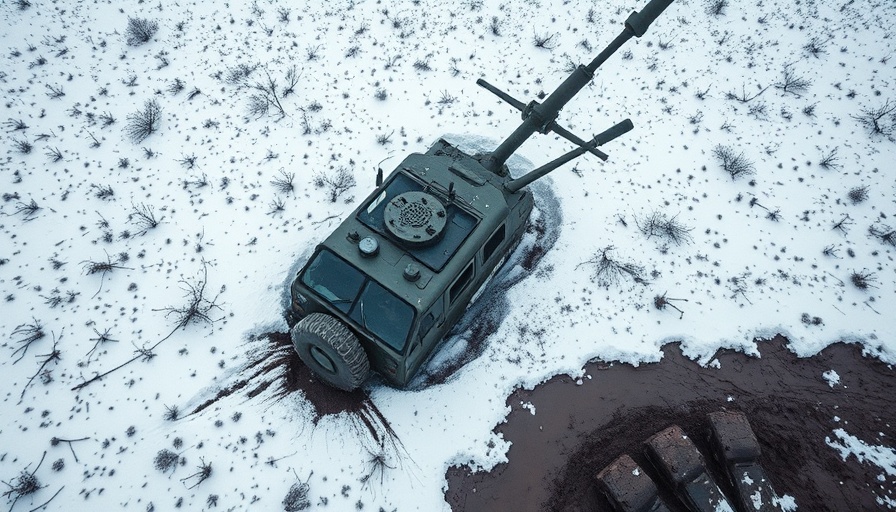
Russian Forces Face Critical Mobility Issues Amid Muddy Conditions
As the weather warms in Ukraine, a significant challenge arises for Russian troops: mud. Known locally as bezdorizhzhya, this muddy season is notorious for halting mechanized force movements, with soldiers now relying on compact civilian vehicles like the Lada—an unfortunate choice that exposes them to devastating drone attacks.
Mud: A Historic Ally for Ukrainian Defenses
The mud season, often referred to as rasputitsa, has a centuries-old reputation for disrupting military logistics, hindering operations for forces ranging from Napoleon's to Hitler's. The combination of heavy clay soils and poor drainage in Ukraine creates treacherous roads that threaten any troop mobility off paved paths.
Drone Warfare Exploiting Vulnerabilities
As Russian vehicles become stuck in mud, they transform into targets for Ukrainian drone operators. Recent reports indicated that a Lada, immobilized north of Chasiv Yar, became a sitting duck for an explosive drone strike, leading to critical losses for Russian forces. This vulnerability underscores the urgent need for strategic reconsideration in vehicle procurement for ground operations.
The Broader Implications for Military Strategy
Logistical disruptions are not limited to infantry; Russian supply lines are heavily affected, forcing troops to stick to already deteriorated paved roads where Ukrainian “road cutter” drones have established dominance. This sets a dangerous precedent: as Russian forces push ahead, they could encounter increasing logistical challenges with every advancing season.
Future Weather Patterns and Military Outcomes
Looking ahead, the muddy conditions are expected to worsen, impacting both sides as they contend with the unpredictable landscape of Ukraine's spring. As command structures consider strategic opportunities amidst the mud, both Ukrainian and Russian forces must navigate the treacherous terrain that could dictate the outcome of engagements in the coming weeks.
 Add Row
Add Row  Add
Add 




Write A Comment